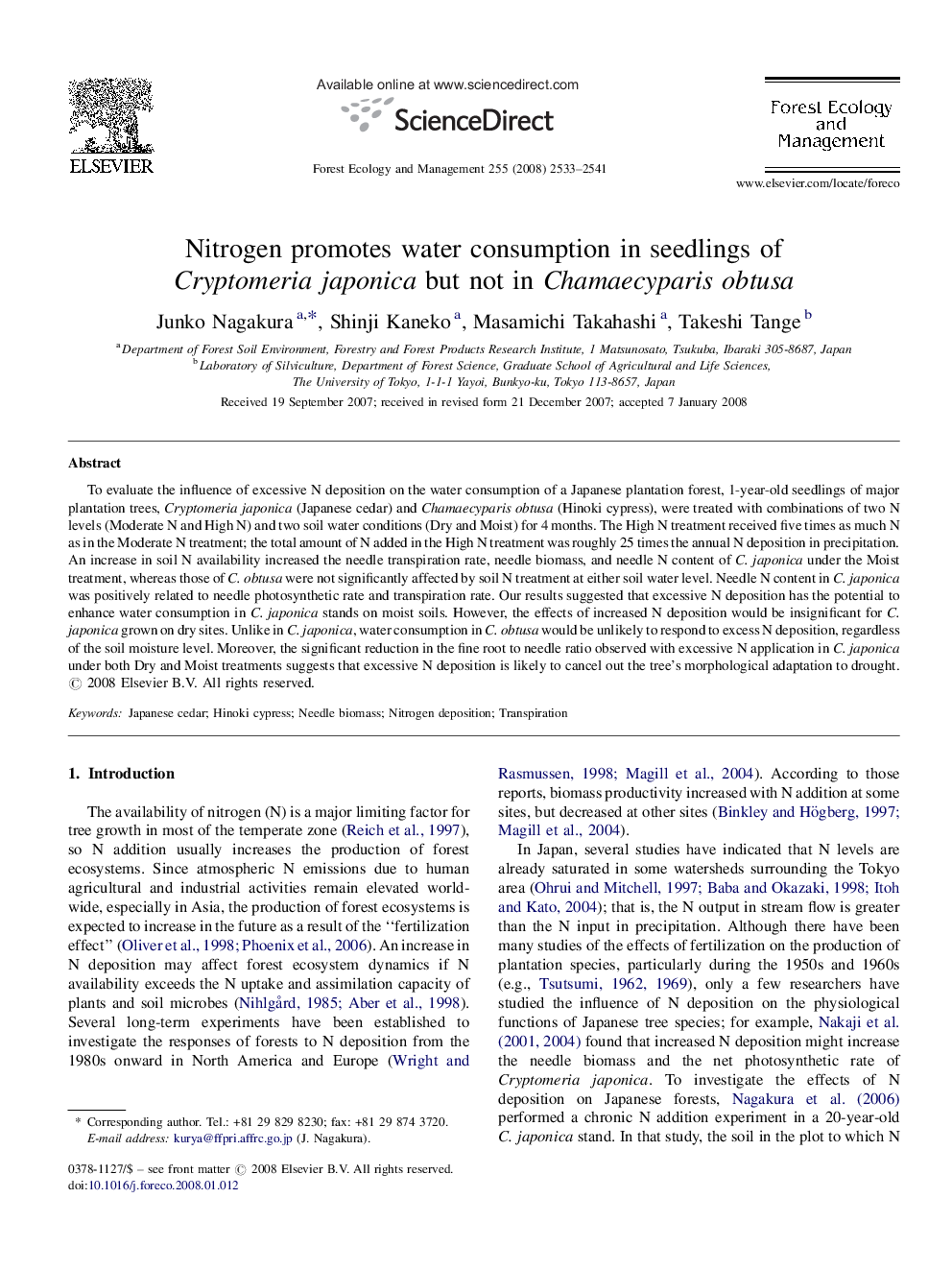| Article ID | Journal | Published Year | Pages | File Type |
|---|---|---|---|---|
| 89389 | Forest Ecology and Management | 2008 | 9 Pages |
To evaluate the influence of excessive N deposition on the water consumption of a Japanese plantation forest, 1-year-old seedlings of major plantation trees, Cryptomeria japonica (Japanese cedar) and Chamaecyparis obtusa (Hinoki cypress), were treated with combinations of two N levels (Moderate N and High N) and two soil water conditions (Dry and Moist) for 4 months. The High N treatment received five times as much N as in the Moderate N treatment; the total amount of N added in the High N treatment was roughly 25 times the annual N deposition in precipitation. An increase in soil N availability increased the needle transpiration rate, needle biomass, and needle N content of C. japonica under the Moist treatment, whereas those of C. obtusa were not significantly affected by soil N treatment at either soil water level. Needle N content in C. japonica was positively related to needle photosynthetic rate and transpiration rate. Our results suggested that excessive N deposition has the potential to enhance water consumption in C. japonica stands on moist soils. However, the effects of increased N deposition would be insignificant for C. japonica grown on dry sites. Unlike in C. japonica, water consumption in C. obtusa would be unlikely to respond to excess N deposition, regardless of the soil moisture level. Moreover, the significant reduction in the fine root to needle ratio observed with excessive N application in C. japonica under both Dry and Moist treatments suggests that excessive N deposition is likely to cancel out the tree's morphological adaptation to drought.
